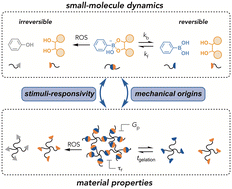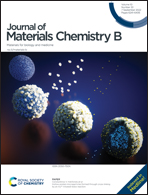Connecting the dynamics and reactivity of arylboronic acids to emergent and stimuli-responsive material properties
Abstract
Over the past two decades, arylboronic acid-functionalized materials have been used in a variety of sensing and stimuli-responsive scaffolds. Their diverse applications result from the various modes of reactivities of arylboronic acids. Arylboronate ester-crosslinked hydrogels are self-healing because the boronate ester bond is dynamic covalent. The hydrogels degrade in acidic environments because of pH-sensitive boronate ester degradation, in the presence of diols because of reversible boronate ester formation, and in the presence of reactive oxygen species (ROS) because of arylboronic acid oxidation. Connecting small-molecule reactivities and dynamics to mechanical and stimuli-responsive properties enables a better understanding of material properties and informs next-generation material design. Here, we highlight recent advances in arylboronic acid-based networks and nanomaterials and how the fundamental chemistry of arylboronic acids can enhance an understanding of the emergent material properties and improve the rational design of stimuli-responsive materials.

- This article is part of the themed collection: Journal of Materials Chemistry B Recent Review Articles


 Please wait while we load your content...
Please wait while we load your content...